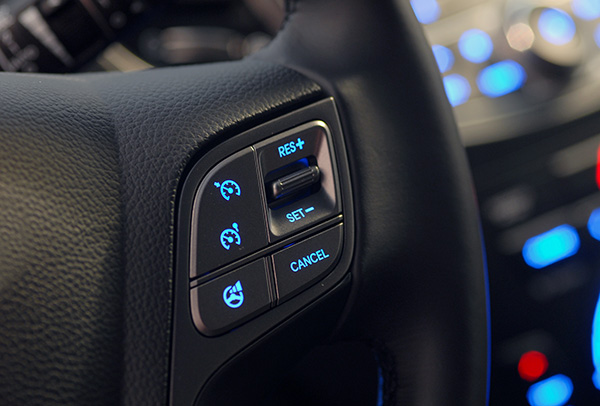
Cruise control is a fantastic feature that allows drivers to maintain a steady speed without constantly pressing the accelerator. However, like any tool, it must be used correctly to ensure safety and efficiency. This article will explore drivers' common mistakes when using cruise control and how to avoid them. Whether you're a seasoned driver or a novice, understanding these pitfalls can help you use cruise control more effectively and safely.
1. Using Cruise Control in Heavy Traffic
One of the most dangerous mistakes is using cruise control in heavy traffic. Cruise control is designed for steady driving conditions, typically on highways with minimal traffic. When traffic is heavy, you need to adjust your speed frequently, which is not feasible with cruise control engaged. This can lead to sudden braking or acceleration, increasing the risk of accidents. Always turn off cruise control in congested areas to maintain full control over your vehicle.
2. Engaging Cruise Control on Slippery Roads
Cruise control should never be used on wet, icy, or otherwise slippery roads. In such conditions, maintaining traction and control is crucial, and cruise control can hinder this. The system might not react appropriately to changes in road conditions, leading to loss of control. When roads are slick, keep cruise control off and manually adjust your speed to stay safe.
3. Relying on Cruise Control on Curvy Roads
Curvy roads require constant adjustments to speed and steering. Relying on cruise control can be dangerous as it doesn't account for sharp turns and curves requiring slower speeds to navigate safely. On winding roads, it's best to manually disengage cruise control and control your speed to handle turns and curves effectively.
4. Not Paying Attention to Speed Limits
While cruise control can help maintain a steady speed, you must remain vigilant about changing speed limits. Failing to adjust your speed when the limit decreases can result in speeding tickets or unsafe driving conditions. Always know the posted speed limits and adjust your cruise control settings accordingly.
5. Ignoring Road Conditions
Cruise control is best suited for smooth, open highways. Using it on roads with frequent stops, construction zones, or varying terrain can be problematic. These conditions often require quick adjustments in speed and direction, which cruise control cannot handle efficiently. Turn off cruise control in such scenarios to maintain better control over your vehicle.
6. Becoming Too Relaxed
One of the benefits of cruise control is that it can reduce driver fatigue on long trips. However, this can also lead to over-relaxation and loss of attentiveness. Staying alert and ready to take over manual control at any moment is crucial. Set reminders to check your surroundings and make necessary adjustments to avoid becoming too complacent.
7. Failing to Properly Set the Speed
Setting the wrong speed on cruise control can lead to unsafe driving conditions. For example, setting it too high can make it difficult to slow down for traffic, while setting it too low might cause you to disrupt traffic flow. Take the time to set a reasonable speed that matches the driving conditions and legal limits.
Keep your cruise control in top condition and drive safely on every journey. Schedule a check-up at Taylormade Automotive and let our experts ensure your car is ready for the road.